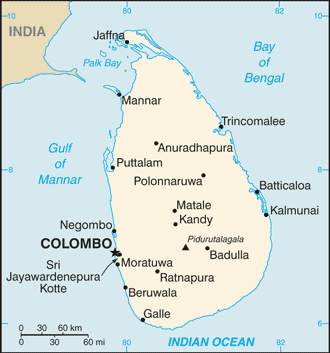 |
Mary's Rosaries |
| Home
Page Contact Us Make a Payment, Methods of Payment, Refund and Exchange Policies Rosaries subpages: How to Pray the Rosary subpages:
Pictures Main Page subpages: Curriculum subpages: Website Terms of Use License Agreement Sitemap The Work of God's Children |
Sri Lanka
 The first Sinhalese
arrived in Sri Lanka late in the 6th century B.C., probably from
northern India. Buddhism was introduced in about the mid-third century
B.C., and a great civilization developed at the cities of Anuradhapura
(kingdom from circa 200 B.C. to circa A.D. 1000) and Polonnaruwa (from
about 1070 to 1200). In the 14th century, a south Indian dynasty
established a Tamil kingdom in northern Sri Lanka. The coastal areas of
the island were controlled by the Portuguese in the 16th century and by
the Dutch in the 17th century. The island was ceded to the British in
1796, became a crown colony in 1802, and was united under British rule
by 1815. As Ceylon, it became independent in 1948; its name was changed
to Sri Lanka in 1972. Tensions between the Sinhalese majority and Tamil
separatists erupted into war in 1983. Tens of thousands have died in
the ethnic conflict that continues to fester. After two decades of
fighting, the government and Liberation Tigers of Tamil Eelam (LTTE)
formalized a cease-fire in February 2002 with Norway
brokering peace negotiations. Violence between the LTTE and government
forces intensified in 2006 and the government regained control of the
Eastern Province in 2007, but neither side has formally withdrawn from
the cease-fire. Sinhala and Tamil are the national languages.
|
A "Safe for Souls" webpage. (this is the bottom of page) |